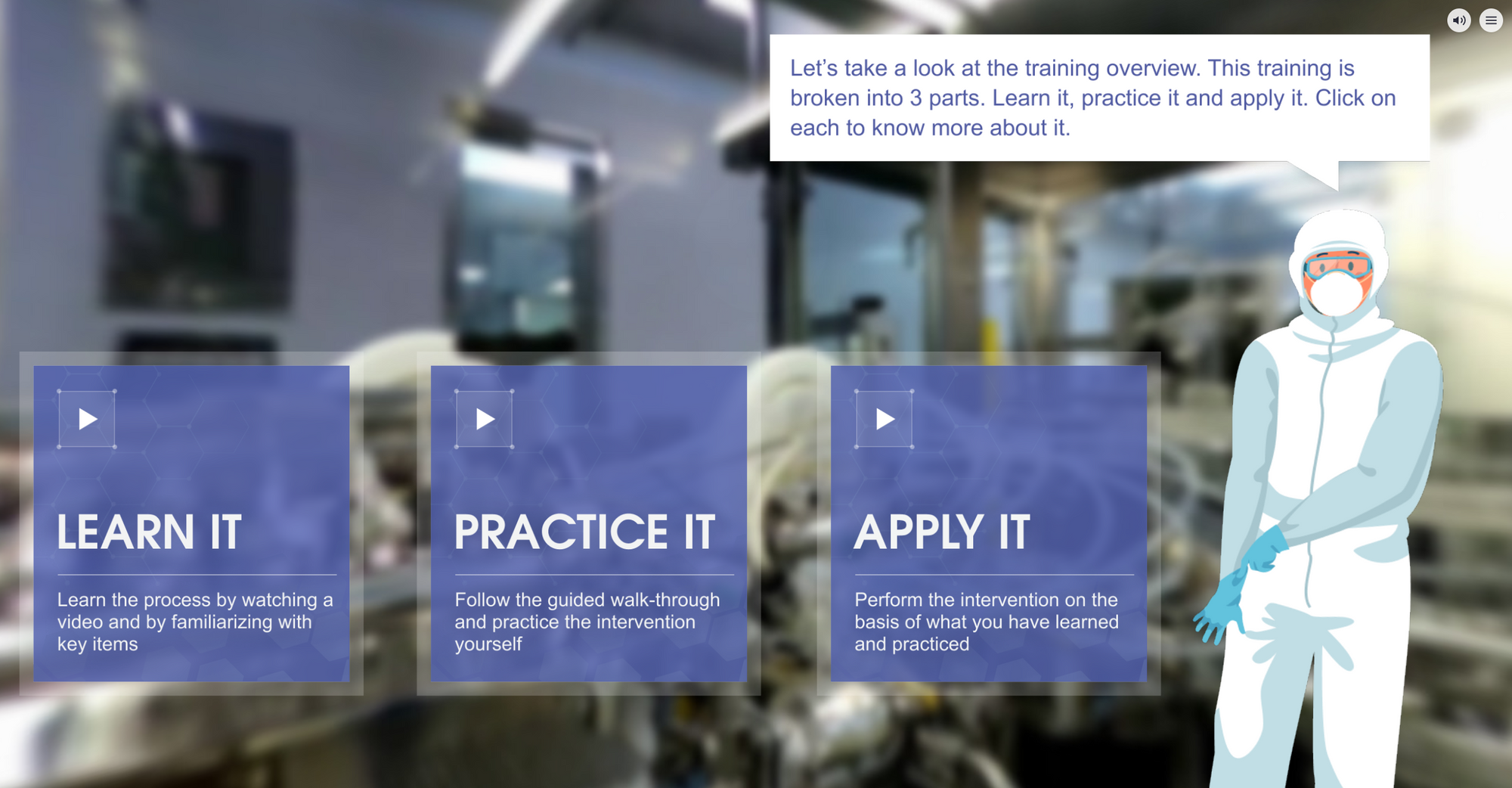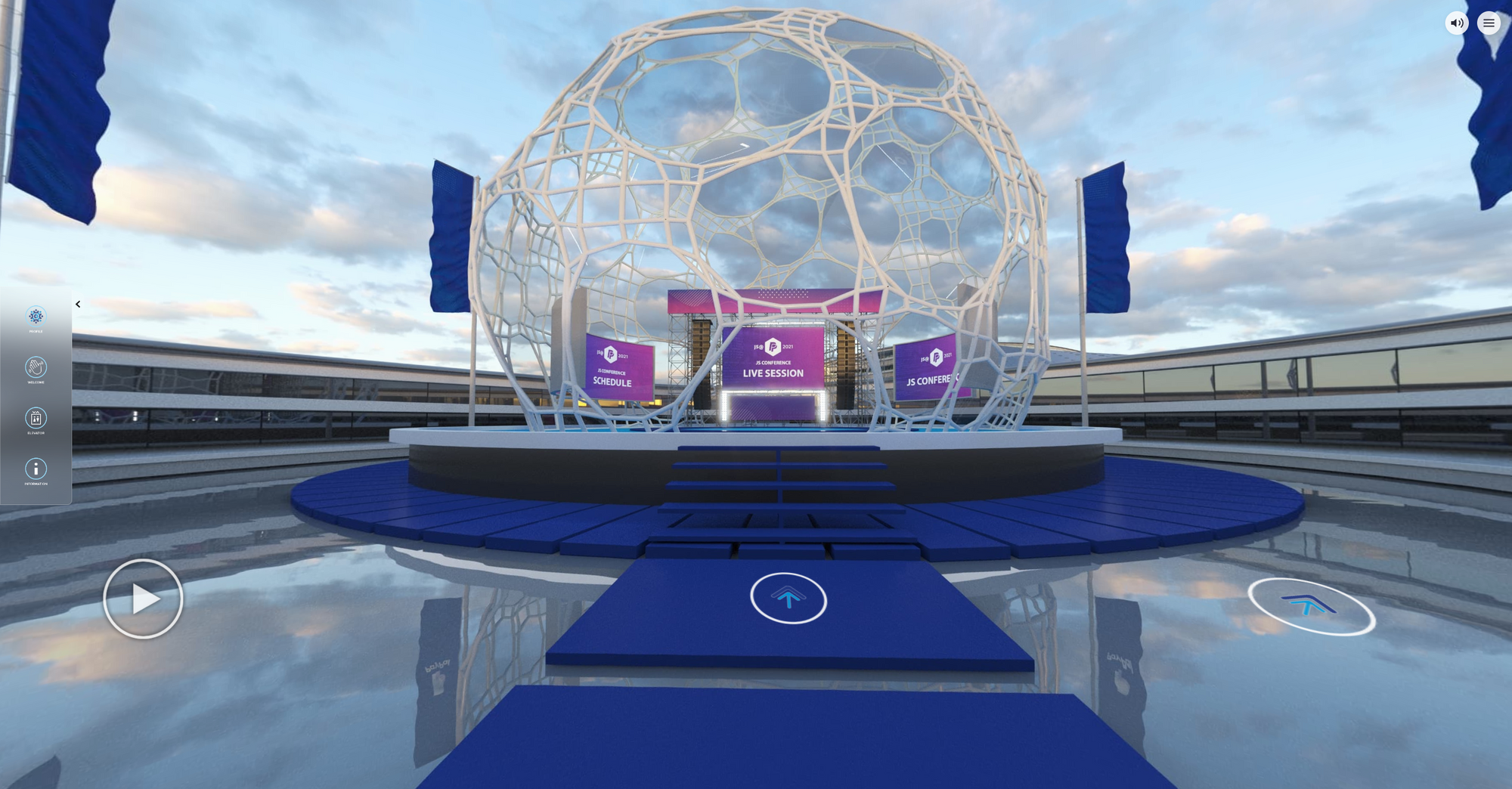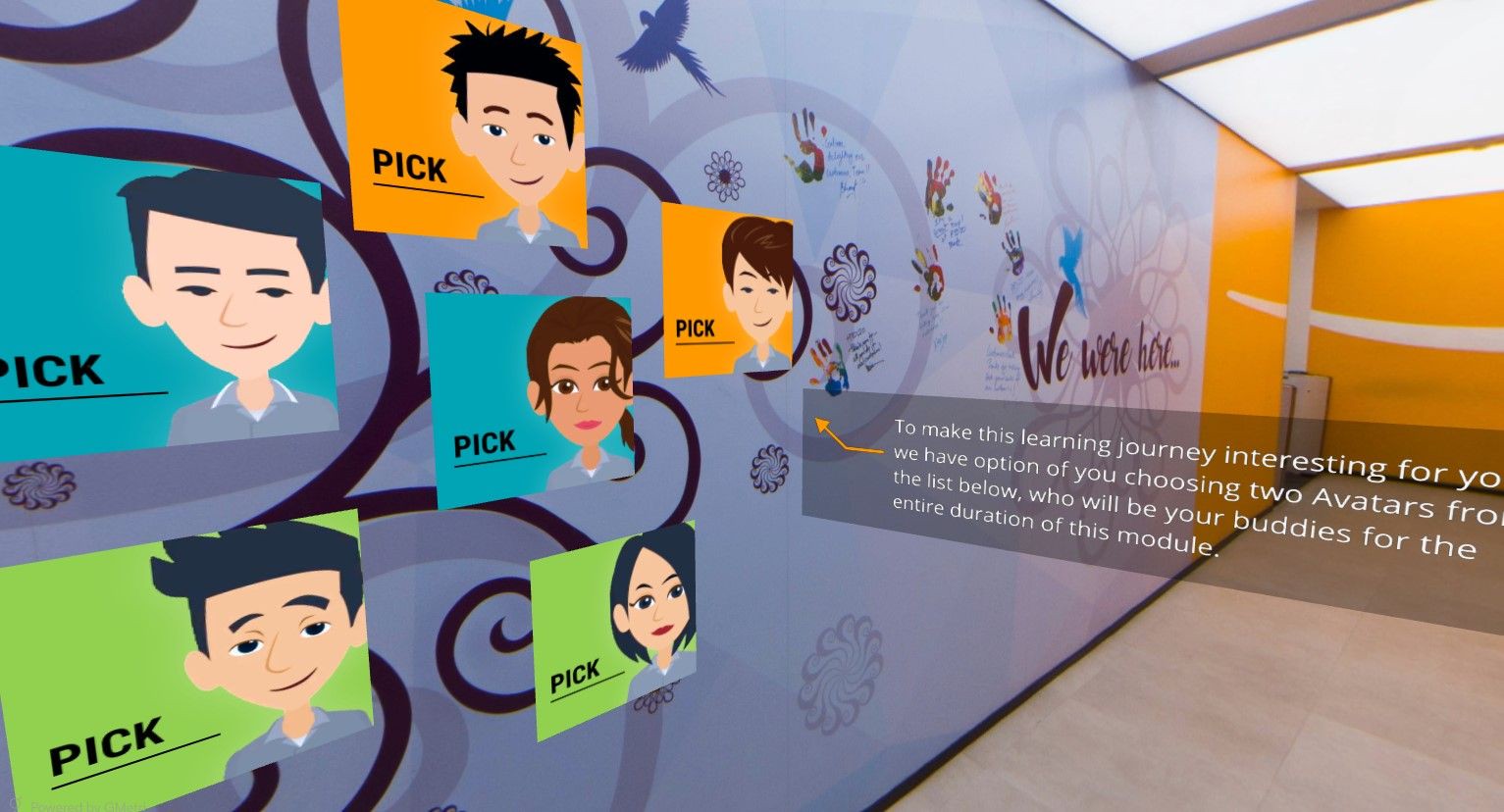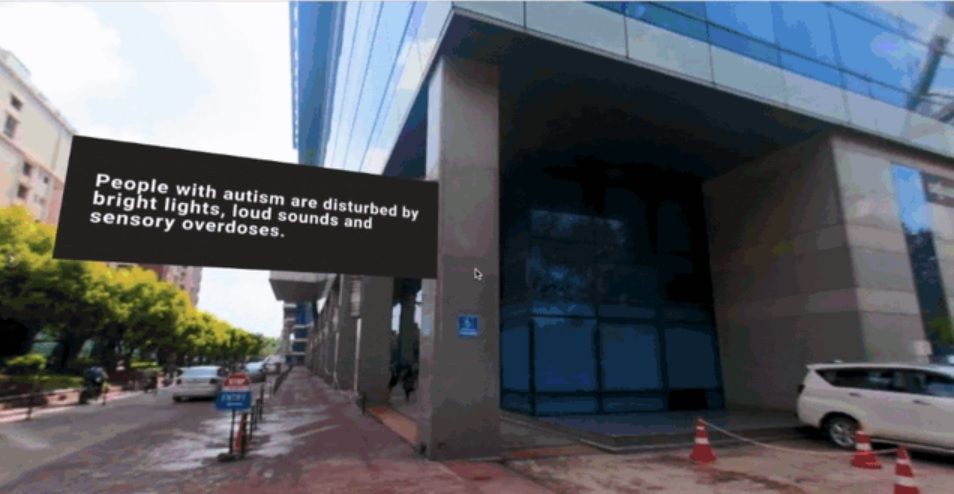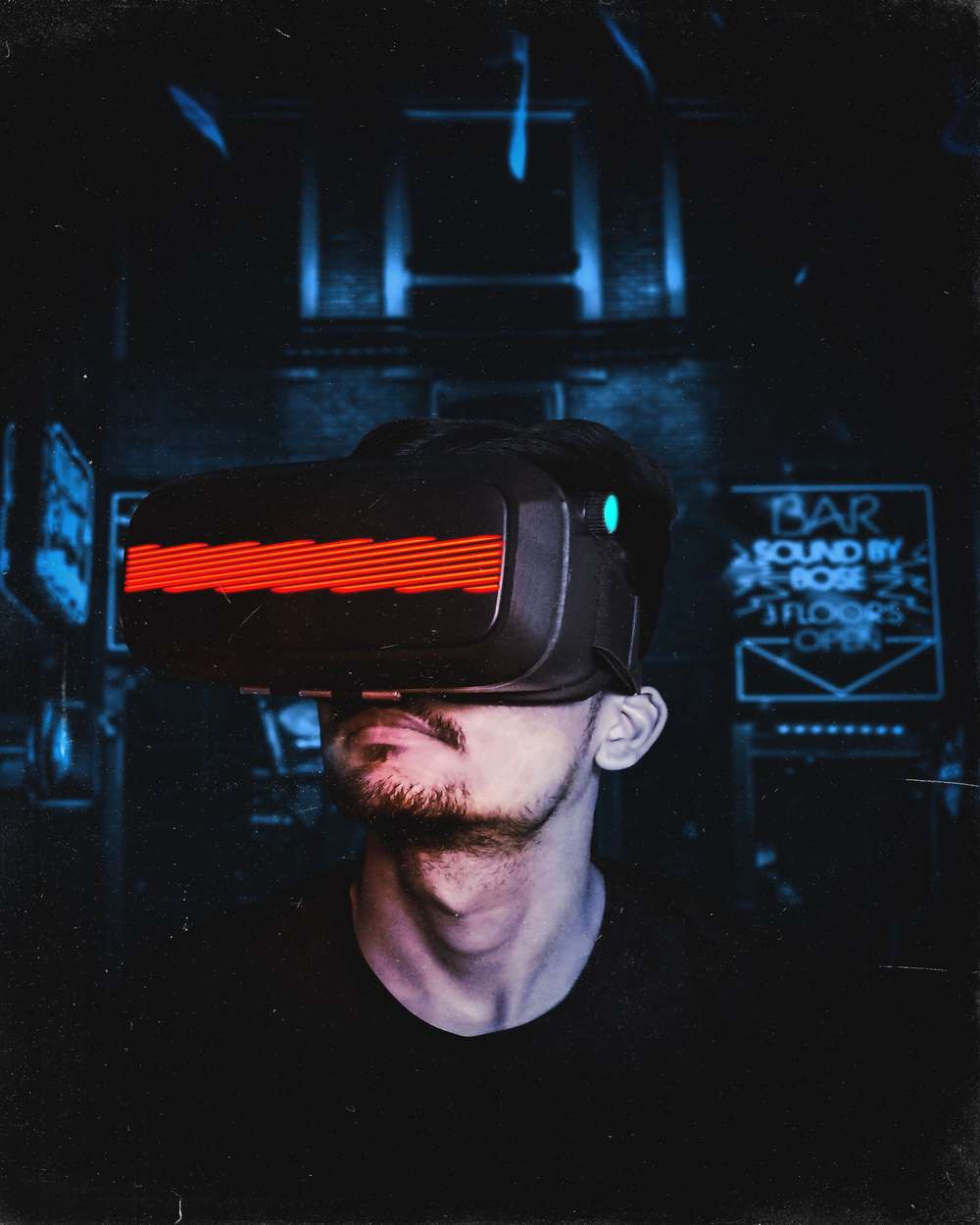One leading global healthcare company recently turned to GMetri to create onboarding and training modules for new hires on their shop floor. These modules were designed to help new hires understand the various processes involved in vaccine manufacturing, and to ensure that they were fully prepared and confident in their roles.
The company recognized the importance of providing new hires with a comprehensive and engaging onboarding experience, as it could help to improve retention and productivity, and reduce the time and resources required for training. With this in mind, they turned to GMetri to develop a customized and immersive learning solution that would meet their specific needs and objectives.
The resulting onboarding and training modules were highly interactive and gamified, which helped to keep new hires engaged and motivated throughout the learning process. They were also designed to be accessible from a variety of devices, including headsets, mobile phones, and computers, which made it convenient and flexible for new hires to complete the modules at their own pace and on their own schedule.
In addition, the modules were seamlessly integrated with the company's learning management system (LMS) and single sign-on (SSO) system, which made it easy for new hires to access and track their progress, and for the company to manage and monitor the onboarding process.
Overall, the onboarding and training modules developed by GMetri were a huge success, and helped to create a more efficient, effective, and engaging learning experience for new hires on the shop floor. They also contributed to the company's long-term success by improving retention, productivity, and performance among new hires.
Structure of the Module:
The onboarding and training modules developed by GMetri were divided into three main sections: "Learn", "Practice", and "Apply".

Learn:
The "Learn" section was designed to introduce new hires to the shop floor and the various processes involved in vaccine manufacturing. It featured 360-degree videos that gave new hires a virtual tour of the shop floor, and allowed them to explore the different areas and machinery in detail.
This not only provided new hires with an overview of the shop floor and the various processes involved in vaccine manufacturing, but it also allowed them to see these processes in action. Through the use of video demonstrations and interactive simulations, new hires were able to see how each process was performed, and to watch experienced workers as they carried out their tasks.
This was an important aspect of the "Learn" section, as it allowed new hires to see firsthand how the various processes were carried out, and to get a sense of the pace and complexity of the work. It also gave them a chance to observe the skills and techniques that were used by experienced workers, which they could then practice and apply in their own training and development.
The ability to see the processes in action was a key feature of the "Learn" section, and helped to provide new hires with a more immersive and authentic learning experience. It also helped to build their confidence and preparedness as they progressed through the module and prepared to take on their roles on the shop floor.
In addition, the "Learn" section included interactive elements that allowed new hires to click on specific items or machines and learn more about them. For example, they could view detailed information about how a particular machine worked, or read about the safety precautions that were required when working with it.

Overall, the "Learn" section was designed to provide new hires with a comprehensive overview of the shop floor and the processes involved in vaccine manufacturing, and to give them a strong foundation of knowledge and understanding that they could build upon in the subsequent sections of the module.
Practice:
The "Practice" section of the onboarding and training modules developed by GMetri was designed to give new hires an opportunity to test and apply their knowledge and understanding of the shop floor and the various processes involved in vaccine manufacturing. This section included a range of interactive and gamified activities, such as scavenger hunts and quizzes, that allowed new hires to reinforce their learning and to demonstrate their skills and understanding.
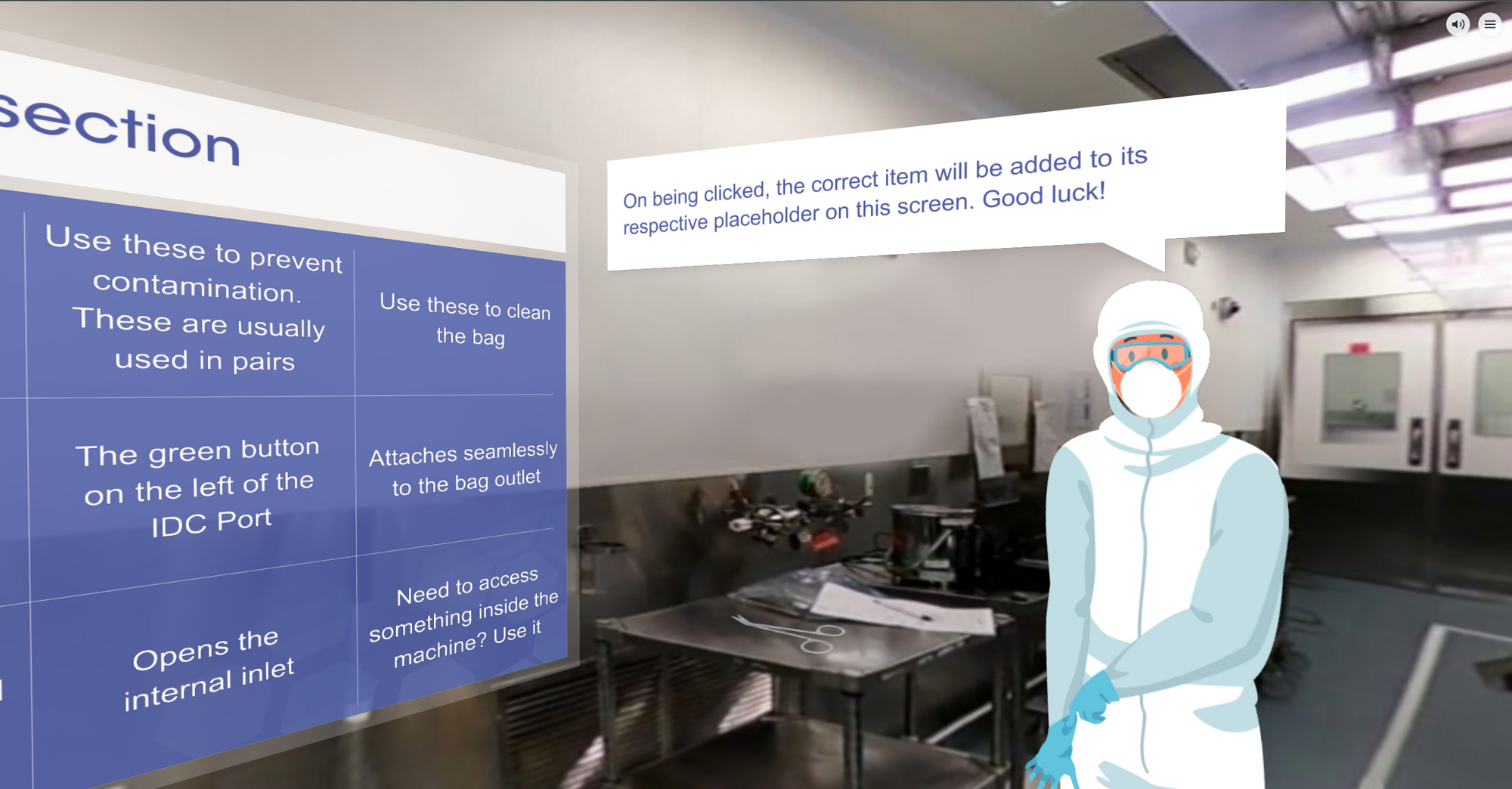
In addition, the "Practice" section featured a virtual trainer who was available to provide guidance and support as new hires worked through the module. The virtual trainer was able to explain each part of the process in detail, and to answer any questions or concerns that new hires had.
Another key feature of the "Practice" section was the integration of live sessions, where new hires could interact with experienced workers and trainers in the metaverse. These sessions allowed new hires to ask specific questions and to get real-time feedback and guidance on their progress.
Overall, the "Practice" section of the onboarding and training modules was an important part of the learning experience, as it provided new hires with an opportunity to apply their knowledge and to get hands-on experience with the processes involved in vaccine manufacturing.
Apply:
The "Apply" section of the onboarding and training modules developed by GMetri was designed to give new hires the opportunity to demonstrate their skills and understanding of the shop floor and the various processes involved in vaccine manufacturing. This section included a range of interactive and immersive activities that allowed new hires to practice and apply their knowledge in a simulated environment.
One key feature of the "Apply" section was the module that asked new hires to perform a specific task in the metaverse. This module tested their ability to apply their knowledge and skills in a realistic and practical setting, and provided them with an opportunity to demonstrate their competence and readiness to take on their roles on the shop floor.
The performance of new hires in this module was scored, and the results were used as a measure of their progress and as a form of accreditation. This helped to ensure that new hires were fully prepared and qualified to take on their roles, and that they had the knowledge and skills necessary to contribute to the company's success.
Overall, the "Apply" section of the onboarding and training modules was a crucial part of the learning experience, as it allowed new hires to demonstrate their competence and to receive recognition and validation for their efforts. It also helped to build their confidence and preparedness as they prepared to take on their roles on the shop floor.
Learning Buddy:
The onboarding and training modules featured a "learning buddy" who acted as a narrator and guide throughout the process. This "learning buddy" was an animated character who provided support and guidance as new hires worked their way through the modules, and helped to make the learning experience more interactive and engaging.
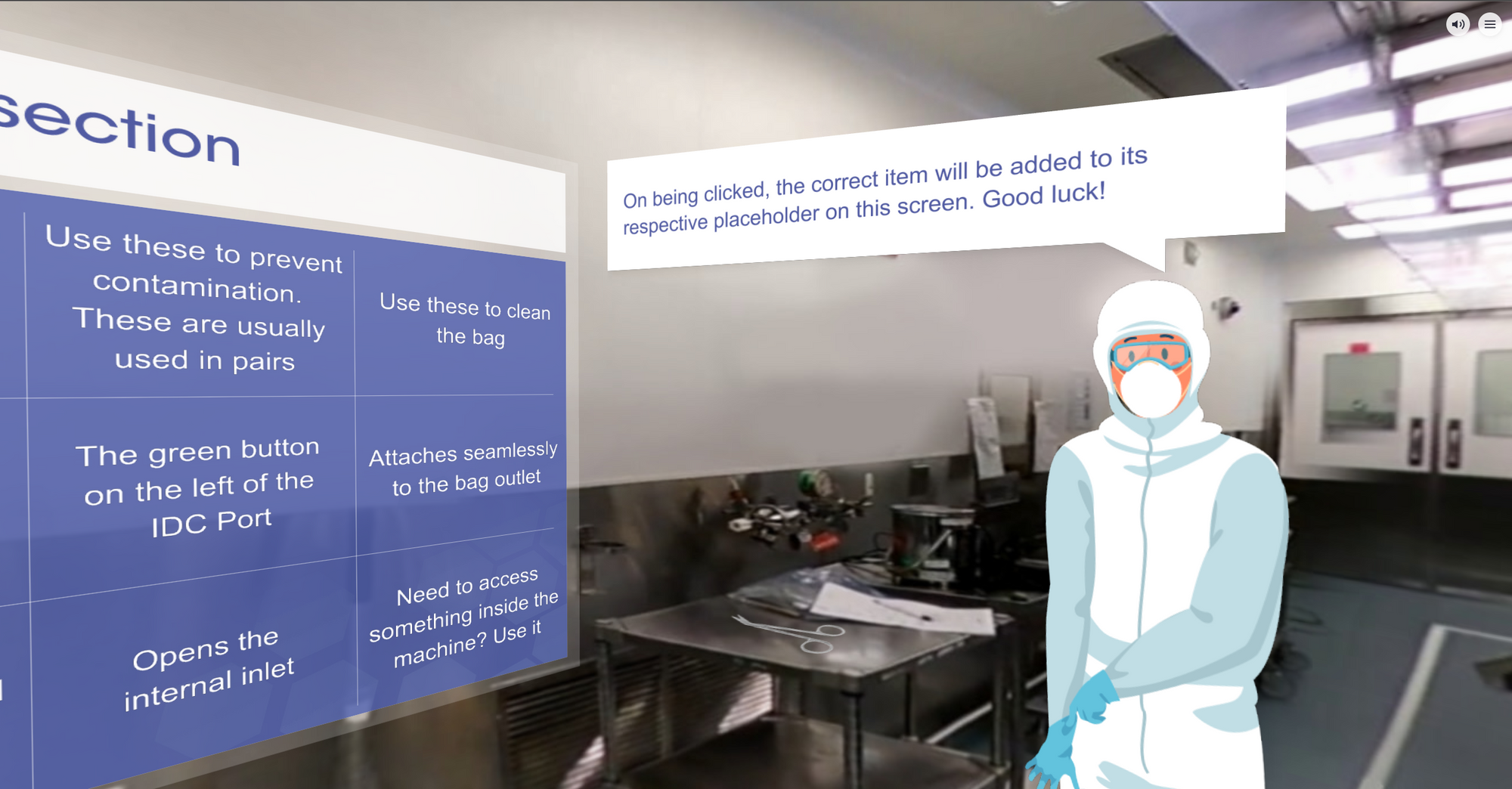
The "learning buddy" provided a friendly and approachable presence, and was available to answer questions and provide assistance as needed. They also provided a sense of continuity and structure to the learning process, and helped to keep new hires focused and motivated as they progressed through the modules.
In addition to acting as a narrator and guide throughout the onboarding and training modules developed by GMetri for a leading global healthcare company, the "learning buddy" also provided hints and assistance if new hires got stuck or encountered difficulties during the test.
This feature was particularly useful for new hires who were struggling to understand a particular concept or process, or who were having trouble completing a task. By providing hints and guidance, the "learning buddy" helped new hires to overcome any challenges or barriers they might be facing, and to keep moving forward in their learning journey.
Overall, the "learning buddy" was an important feature of the onboarding and training modules, and helped to make the learning experience more interactive, engaging, and enjoyable for new hires. It also contributed to the overall effectiveness and success of the modules, as it helped to ensure that new hires were able to learn and retain the knowledge and skills they needed to succeed on the shop floor.
Scoring and Analytics:
The scoring and performance of new hires in the onboarding and training modules developed by GMetri for a leading global healthcare company was tracked in real-time via dashboards. These dashboards provided a detailed and up-to-date view of the progress and performance of each new hire, and allowed the company to monitor and track the effectiveness of the learning experience.
The dashboards included a range of metrics and analytics, such as the time taken to complete each module, the number of attempts required to pass each test, and the overall score achieved. This information was presented in an easy-to-understand and visually appealing format, and was updated in real-time as new hires progressed through the modules.
The real-time dashboards were an important tool for the company, as they allowed them to get a detailed and accurate view of the progress and performance of each new hire, and to identify any areas of strength or weakness. This information was used to guide and support the learning process, and to ensure that new hires were receiving the best possible onboarding and training experience.
Overall, the real-time dashboards were a valuable feature of the onboarding and training modules, and helped to make the learning experience more transparent, accountable, and effective for both the company and the new hires.
360 images and 3D models as a base:
The onboarding and training modules developed by GMetri for a leading global healthcare company used a combination of 3D models and real-life 360-degree images and videos to provide new hires with a comprehensive and immersive learning experience.
The use of 3D models had several benefits. First, 3D models allowed new hires to explore and interact with a virtual representation of the shop floor and the various processes involved in vaccine manufacturing in a way that was not possible with real-life images and videos alone. They could manipulate the view, zoom in and out, and move around the virtual space to get a better understanding of how everything worked.
Second, 3D models were more flexible and adaptable than real-life images and videos. They could be easily modified or updated to reflect changes in the shop floor or the processes involved in vaccine manufacturing, and could be used to simulate different scenarios or conditions. This made it easier for the company to keep the learning content up to date and relevant, and to tailor the learning experience to the specific needs and objectives of new hires.
On the other hand, the use of real-life 360-degree images and videos had several benefits as well. First, real-life images and videos provided new hires with a more authentic and realistic view of the shop floor and the processes involved in vaccine manufacturing. They could see the actual layout, equipment, and surroundings, and get a sense of the scale and complexity of the work.
Second, real-life images and videos allowed new hires to see the processes in action and to observe the skills and techniques used by experienced workers. This provided them with a more hands-on and practical learning experience, and helped to build their confidence and preparedness as they prepared to take on their roles on the shop floor.
Overall, the combination of 3D models and real-life 360-degree images and videos was an effective way to provide new hires with a comprehensive and immersive learning experience that covered both the theoretical and practical aspects of the work.
A JIT Reference:
The modules also acted as a reference for just-in-time (JIT) learning, both during the initial training process and later on.
New hires were able to access the learning content and revisit the modules as needed, even after they had completed the onboarding and training process. This allowed them to refresh their knowledge and skills, and to stay up-to-date with the latest processes and developments on the shop floor.
The availability of the modules as a reference for JIT learning was particularly useful for new hires who were working on the shop floor, and who needed to be able to recall and apply their learning in a fast-paced and dynamic environment. It allowed them to learn on the job, and to stay engaged and motivated as they continued to grow and develop in their roles.
Overall, the ability of the onboarding and training modules to act as a reference for JIT learning was a valuable feature, and helped to ensure that new hires were able to continue learning and growing even after they had completed the initial training process. It also contributed to the overall effectiveness and success of the modules, as it helped to ensure that new hires were fully prepared and qualified to take on their roles.
Access:
The onboarding and training modules were designed to be accessible and convenient for new hires, and could be accessed via headsets, mobile phones, or laptops.
This was an important feature, as it allowed new hires to learn at their own pace and on their own schedule, and to fit the learning experience into their busy lives. It also made it possible for new hires to access the learning content from anywhere, at any time, as long as they had an internet connection.
The ability to access the modules via headsets, mobile phones, or laptops also made it possible for new hires to learn in a variety of settings and environments, and to choose the learning experience that best suited their needs and preferences. For example, they could learn in a quiet and comfortable space at home, or on the go using their mobile phone.
Overall, the accessibility of the onboarding and training modules via headsets, mobile phones, and laptops was a valuable feature, and helped to make the learning experience more convenient, flexible, and effective for new hires. It also contributed to the overall effectiveness and success of the modules, as it helped to ensure that new hires were able to learn and retain the knowledge and skills they needed to succeed on the shop floor.
Authentication:
One of the key features of the immersive learning solution was the integration of single sign-on (SSO) authentication. This made it more convenient and secure for new hires to access the learning content, as it allowed them to use a single set of login credentials to access multiple applications or platforms.
The integration of SSO authentication reduced the number of login prompts new hires needed to complete, and reduced the risk of forgotten or compromised passwords. It also enhanced security, as it eliminated the need to store multiple usernames and passwords on devices or in browsers, which can be vulnerable to theft or hacking.
Overall, the integration of SSO authentication was a valuable feature of the onboarding and training modules, and helped to make the learning experience more convenient and secure for new hires. It also contributed to the overall effectiveness and success of the modules, as it helped to ensure that new hires were able to learn and retain the knowledge and skills they needed to succeed on the shop floor, and to contribute to the company's success.
LMS + SCORM Integration:
The onboarding and training modules developed by GMetri for a leading global healthcare company were integrated seamlessly into the company's learning management system (LMS) as externally hosted SCORM modules.
SCORM (Sharable Content Object Reference Model) is a widely used standard for e-learning content that allows it to be shared and reused across different LMSs and platforms. By hosting the onboarding and training modules as SCORM modules, GMetri was able to ensure that they could be easily integrated into the company's LMS, and that new hires would be able to access the learning content from within the LMS.
The seamless integration of the modules into the LMS as SCORM modules was a valuable feature, as it made it more convenient and seamless for new hires to access the learning content, and eliminated the need for them to switch between different applications or platforms. It also made it easier for the company to track and monitor new hires' progress, and to ensure that they were meeting the learning objectives of the modules.
Overall, the integration of the onboarding and training modules into the LMS as SCORM modules was a key success factor, and helped to make the learning experience more convenient, seamless, and effective for new hires. It also contributed to the overall effectiveness and success of the modules, as it helped to ensure that new hires were able to learn and retain the knowledge and skills they needed to succeed on the shop floor, and to contribute to the company's success.
Impact:
The onboarding and training modules developed by GMetri for a leading global healthcare company had a positive impact on various stakeholders, including new hires, the company, and the overall industry.
For new hires, the modules provided a convenient, interactive, and engaging learning experience that helped them to learn and retain the knowledge and skills they needed to succeed on the shop floor. It also made it easier for them to fit the learning experience into their busy lives, and to access the learning content from anywhere, at any time, using their preferred devices.
For the company, the modules helped to ensure that new hires were fully prepared and qualified to take on their roles, and to contribute to the company's success. It also helped to reduce the time and resources required for onboarding and training, and to improve the retention and productivity of new hires.
Overall, the impact of the onboarding and training modules was positive for various stakeholders, and contributed to the overall effectiveness and success of the learning experience.
GMetri’s Revolutionary No-code authoring:
One of the key benefits of GMetri's no-code platform for the onboarding and training modules developed for a leading global healthcare company was the ability to create the modules internally, without the need for specialized coding skills. This made it possible for the company to develop and customize the modules to meet its specific needs and goals, and to iterate and improve the learning experience over time.
The no-code platform also made it easy to modify the modules if there were changes in the vaccine manufacturing processes, or if the company wanted to update or expand the learning content. This helped to ensure that the modules remained relevant and effective, and that new hires were able to learn and retain the knowledge and skills they needed to succeed on the shop floor.
GMetri's no-code platform for the onboarding and training modules was a key success factor, and helped to make the learning experience more flexible, customizable, and effective for new hires.
GMetri's no-code platform enabled the company to move at lightning speed when developing and deploying onboarding and training modules for new hires. The platform made it possible for the company to quickly create, customize, and iterate the learning experience, without the need for specialized coding skills or resources.
This allowed the company to respond quickly to changes in the vaccine manufacturing processes, or to new learning needs, and to ensure that new hires were fully prepared and qualified to take on their roles. It also helped to reduce the time and resources required for onboarding and training, and to improve the retention and productivity of new hires.
Overall, the use of GMetri's no-code platform helped the company to move at lightning speed when developing and deploying the onboarding and training modules, and to effectively meet the learning needs of new hires.
In a nutshell:
- GMetri's no-code platform enabled the development of customized and effective onboarding and training modules for new hires
- The integration of the modules into the company's LMS as SCORM modules made it more convenient and seamless for new hires to access the learning content
- The use of single sign-on (SSO) authentication enhanced the security and convenience of the learning experience
- The modules were highly interactive and gamified, which boosted engagement and retention
- The modules provided a convenient and flexible learning experience that could be accessed from anywhere, at any time, using preferred devices
- The modules helped to ensure that new hires were fully prepared and qualified to take on their roles, and to contribute to the company's success
- The modules helped to reduce the time and resources required for onboarding and training, and to improve the retention and productivity of new hires
- The modules supported the overall quality and effectiveness of vaccine manufacturing processes, and contributed to the success and innovation of the company and the industry.
- The onboarding and training modules were structured into three parts: learn, practice, and apply, which provided a comprehensive and effective learning experience for new hires.
- The learn section included 360 videos and 3D models of the shop floor, as well as real-life video footage of the processes in action.
- The practice section included interactive games and a virtual trainer, as well as a live Q&A session.
- The apply section included a scored simulation of the processes, which served as accreditation.
Want a similar module for your organization? Contact GMetri sales here.



